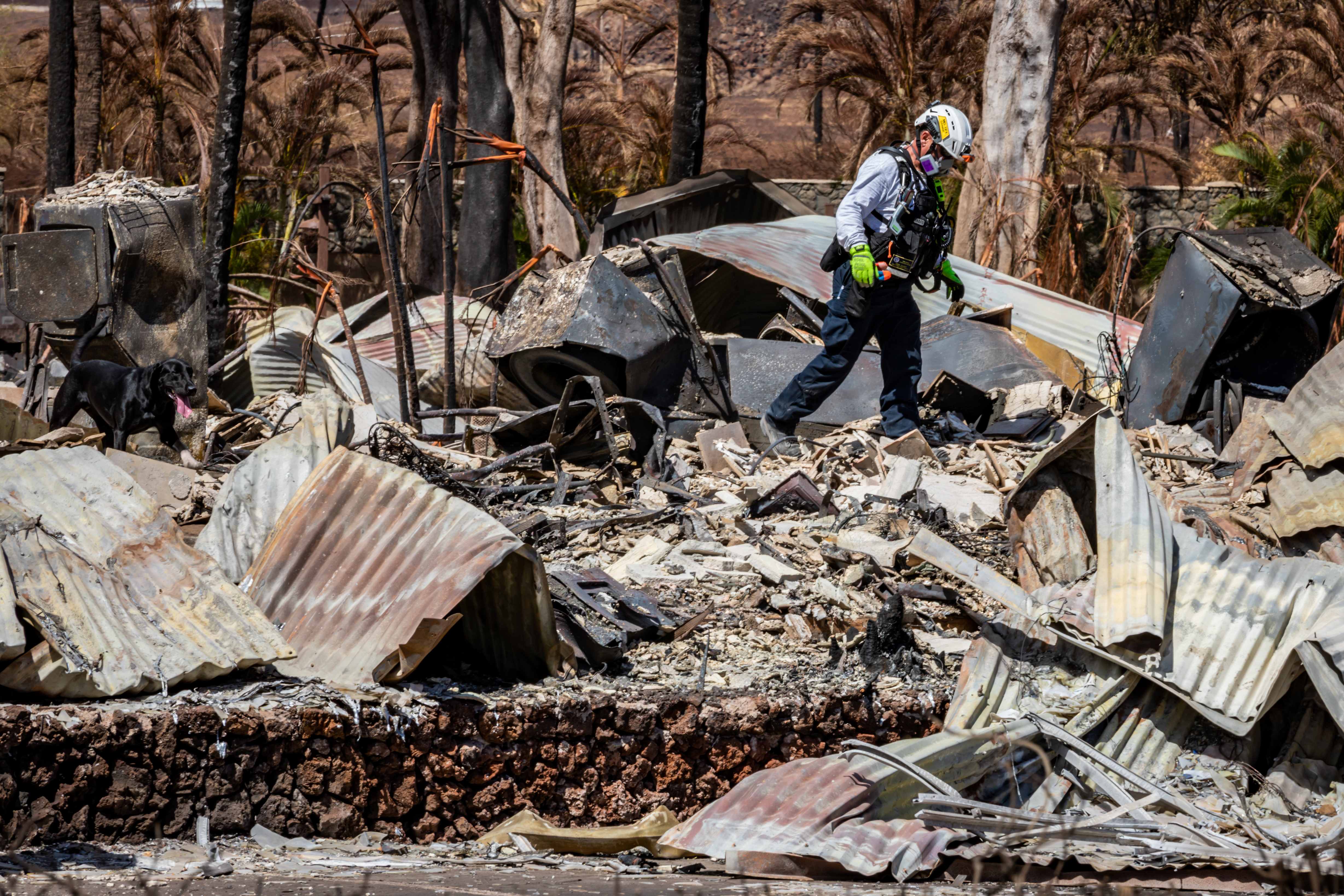Much of leadership involves creating and cultivating the environment for your team to thrive. So, how can leaders proactively grow and empower emerging leaders? A chief means is to have a deliberate process that increases a leader’s decision making space.
Emergency managers, often hailed for their ability to make critical decisions in the face of great risk, also face significant challenges. On the seemingly calm “blue sky” days, they grapple with creating “decision space.” As emergency management professionals approach the busy seasons of hurricanes, tornadoes, and wildfires, they must strive to understand these challenges and find ways to support leaders in the field and their teams.
Decision space is the conceptual area within which a leader or team has the authority and autonomy to make decisions without needing approval from higher-ups. It gives emergency managers the latitude to act quickly and effectively, especially in high-pressure situations where every second counts.
On “blue sky” days, when immediate crises are not present, creating and maintaining this decision space becomes crucial for preparation, training, and strategic planning. Without sufficient decision space, emergency managers can become bogged down by unnecessary bureaucracy, delayed decision-making, and misaligned priorities, hindering their ability to respond effectively when disaster strikes. This space empowers frontline employees to make swift, informed decisions and ensures the entire team is aligned and prepared to act cohesively when the pressure is on.
 Only 33% of respondents from the public and private sectors agreed that decisions across their organizations were made in time for effective execution, according to McChrystal Group’s database of employee surveys. This delay in decision-making can have dire outcomes in emergency management, including decision fatigue, delayed execution, and communication issues. However, you can overcome these challenges as a leader and ensure effective, timely decision-making with an acute focus on decision space.
Only 33% of respondents from the public and private sectors agreed that decisions across their organizations were made in time for effective execution, according to McChrystal Group’s database of employee surveys. This delay in decision-making can have dire outcomes in emergency management, including decision fatigue, delayed execution, and communication issues. However, you can overcome these challenges as a leader and ensure effective, timely decision-making with an acute focus on decision space.
Life or Death Consequences
In the preparation-dependent world of emergency management, a leader’s actions on blue-sky days can directly impact their team response when lives and property are on the line. However, many emergency managers lack the decision space needed during blue-sky days to fully utilize the time to prepare, recuperate, and prepare themselves for the next response. Decision space refers to the authority lane within which a teammate can make decisions. It’s where they can act autonomously without seeking approval from higher-ups.
The absence of decision space can manifest in various ways, each with significant implications. These include stress and reduced problem-solving skills, delayed or lack of execution, inability to prioritize effectively, minimal productivity, communication and collaboration issues, and little to no alignment among the team with broader organizational goals. In a commercial business, this means a loss of market share, an impact on a company’s bottom line, and reduced effectiveness. However, poor decision space can mean the difference between life and death in emergency management. The Maui Wildfires are a tragic example of how a lack of decision space led to ineffective risk management, indecisiveness, and poor communication.

“After action reports released so far from the Maui Wildfire point to a breakdown in communication, which exasperated the efforts of brave and dedicated first responders,” said Gracia Szczech, former Regional Administrator for FEMA Region 4 and senior advisor at McChrystal Group. “Preparation and collaboration were singled out in several of the documents, and these activities only occur on blue-sky days with adequate decision space.”
Our work with emergency managers nationwide finds that leaders struggle to delegate decision rights to employees. Notably, respondents outside the public sector are roughly 4.5 times more likely than those in emergency management to agree that other teams within their organization articulate how their actions impact their team, according to data from McChrystal Group.
Eyes on, Hands Off
The first step to improved decision space is to empower those at all levels by setting clear roles and expectations. Frontline employees should make decisions within their expertise, and they often have valuable insights and firsthand knowledge.
“We call this approach ‘eyes on, hands off,’” Szczech said. “Leaders should provide guidance and support without micromanaging. Trust your team to execute decisions while maintaining oversight. This balance fosters autonomy and accountability.”
When team members understand their responsibilities and how they contribute to the overall mission, decision making becomes more effective and accountability increases. Ambiguity can hinder decision making. Clearly defined processes, expectations, and boundaries remove unnecessary bureaucracy or obstacles that slow decision making.
Simple rules are concise, easy-to-understand guidelines that help teams make decisions and act quickly and efficiently. Complexity often accompanies risk and uncertainty, and simple rules can streamline decision-making and information flow. Simple rules have three essential characteristics:
- Understandable: Simple rules must be clear and unambiguous, leaving no room for misinterpretation. Everyone on the team should interpret the rule in the same way, ensuring consistent and aligned actions across the team.
- Memorable: These rules must be easily recalled, especially in high-pressure situations. If team members must look up the rules in a policy guide, they won’t be as effective. The best simple rules are top-of-mind and can be quickly accessed mentally.
- Actionable: Simple rules should guide specific actions that team members can take. They are not just values or principles but concrete instructions that enable decisive action in the moment, helping teams navigate dynamic environments effectively

Organizations can navigate complex situations more effectively by implementing simple rules and enhancing their decision-making processes. Simple rules were vital to the response to save the Notre Dame Cathedral in Paris, France, after it caught fire. Leaders gave the more than 400 firefighters simple, concise rules to guide their operations: people first, art second, furniture third, and structure last.
“Simple rules are the backbone of effective decision making in high-pressure environments,” said David Livingston, senior learning designer at McChrystal Group. “By establishing clear, concise guidelines, we enable our teams to act swiftly and confidently, reducing the risk of analysis paralysis and improving overall execution.”
McChrystal Group’s Team Resilience Playbook guides leaders in developing and implementing simple rules within their organizations. These rules can help simplify choices when time is short and risk is high to improve judgment, enable coordination, and allow leaders to direct action indirectly.
‘When Everything is important…’
Prioritization is a critical skill for creating decision space; however, many leaders struggle with it. Organizations whose leadership teams prioritize their projects tend to have better future performance and higher employee retention, according to McChrystal Group data. Here are some strategies for effective prioritization:
- Involve Your Team: Don’t prioritize in isolation. Include your team and assess the criticality of their current focus. Redirect them toward what matters most.
- Principles First: Priorities should align with principles. Determine the guiding principles that should shape your prioritization.
- Immediate Needs vs. Aspirational Goals: Assess your organization's immediate needs and aspirational goals. Use methods like the Eisenhower Matrix to prioritize urgent and important tasks.
- Consistency with Mission: Consistently prioritize actions that directly serve your mission. Sticking to mission-aligned priorities creates stability in a fast-paced environment.
Remember, effective prioritization isn’t just about what you choose to do; it’s also about what you decide not to do. McChrystal Group offers resources on its website to aid leaders in effective prioritization.
Enhancing Communication and Collaboration

Improving cross-functional collaboration is key to effective decision-making. Leaders should establish systems to assess networks regularly, identify potential partners, and leverage additional resources. Well-connected leaders are 44% more likely to agree that decisions are made in time for effective execution. Some common tactics for improving collaboration include:
- Use of Organizational Network Analysis: This helps leaders grow their network and influence, which can be time-consuming but ultimately beneficial.
- Leader Development Programs: Investing in leader development programs is essential. These programs should focus on critical thinking, problem-solving, and cross-functional collaboration. Experiential training, such as simulations and storytelling, addresses behavior gaps and enhances decision-making skills.
- Establish a Communication Forum: This forum provides a structured environment for critical players to share information, discuss priorities, and remove roadblocks. By holding regular bi-weekly, cross-functional intelligence-sharing sessions, emergency managers can ensure that all stakeholders are on the same page, facilitating better coordination and execution during crises.
Creating decision space within emergency management teams is crucial for agile and adaptable organizations. Agencies will see better, more informed decisions by setting clear roles, prioritizing decisions, enhancing communication, and investing in leader development. This approach improves overall organizational outcomes, leading to higher employee engagement, increased productivity, and better alignment with strategic goals. Effective decision space management ensures emergency managers are better prepared to handle everyday operations and crises, resulting in increased efficiencies and better resource allocation.



